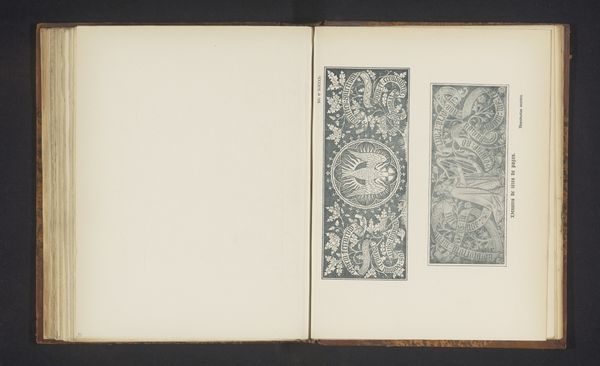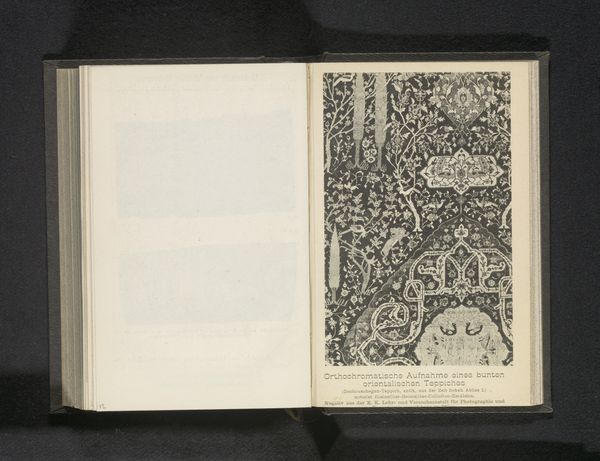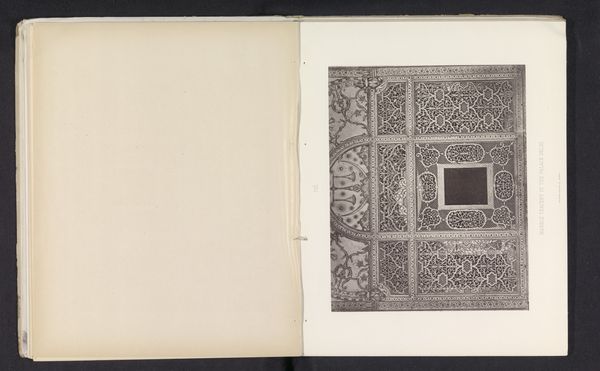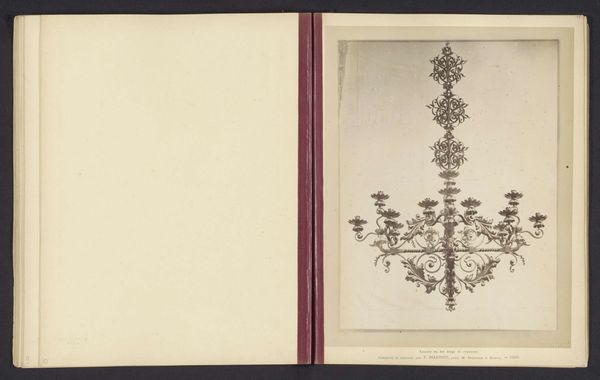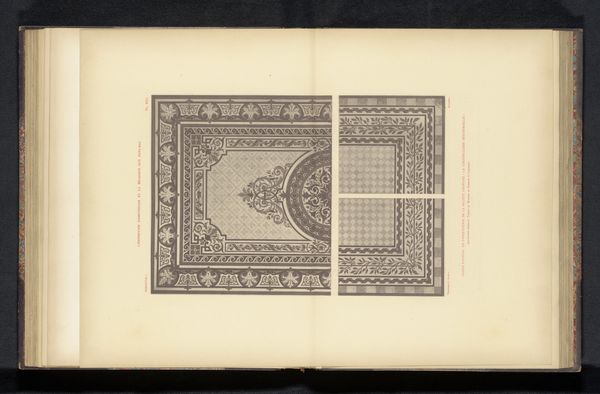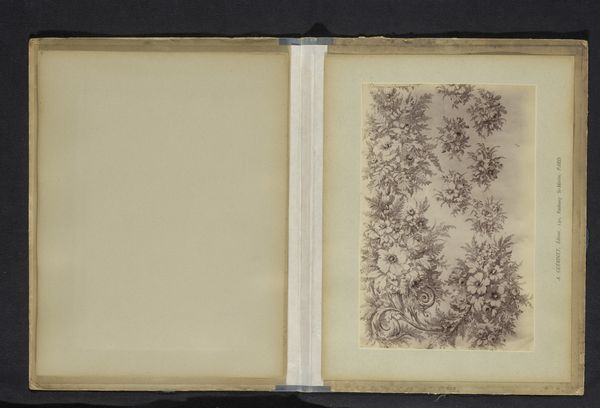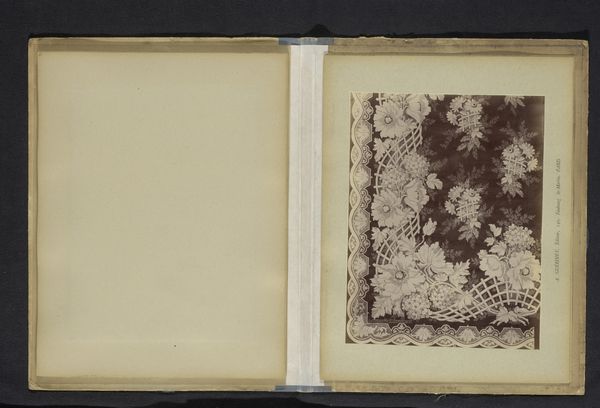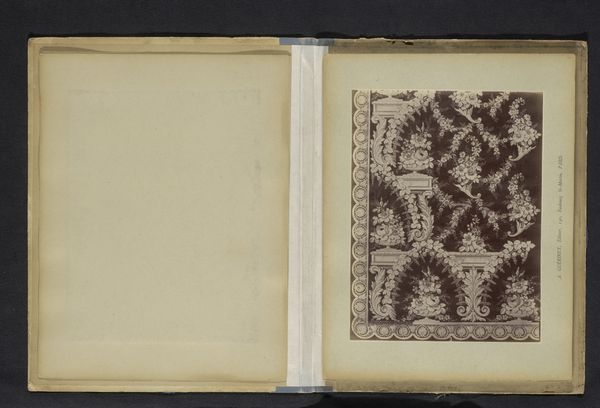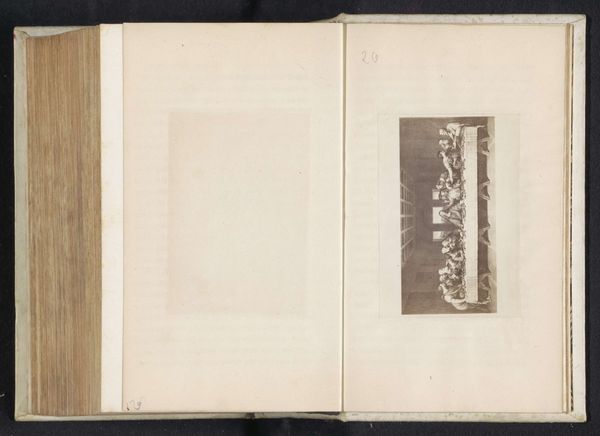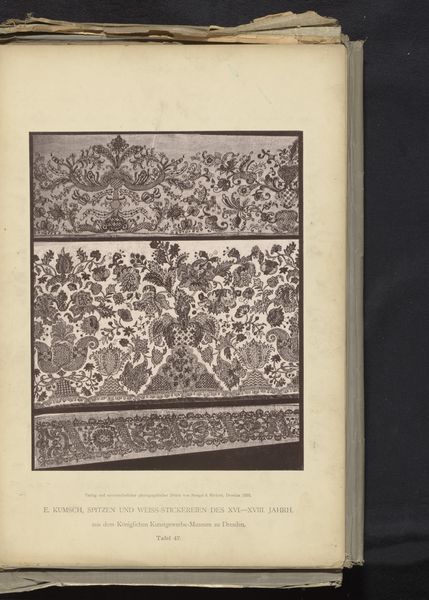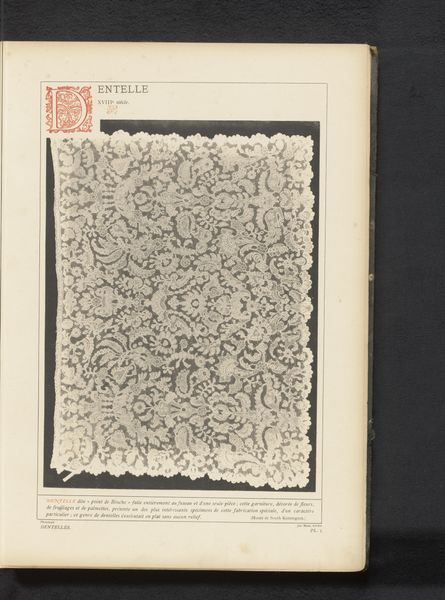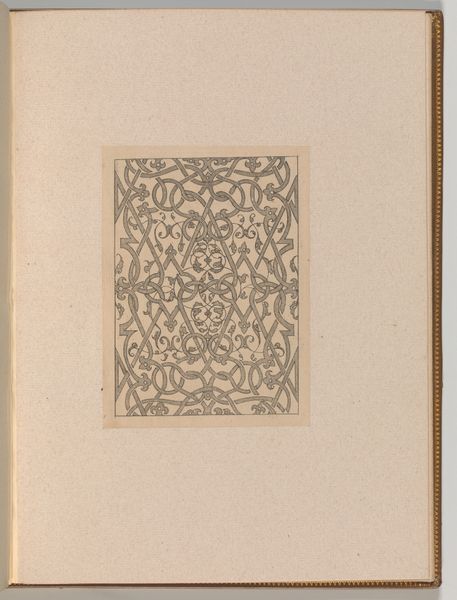
drawing, print, paper
#
drawing
# print
#
paper
#
decorative-art
Dimensions: height 128 mm, width 91 mm
Copyright: Rijks Museum: Open Domain
Curator: This captivating artwork, dating back to before 1890, is titled "Gedecoreerd kleed." It is attributed to K.K. Lehr- und Versuchsanstalt für Photographie and appears to be a drawing or print on paper, showcasing decorative art. Editor: The immediate impression is of an intricate, almost ethereal quality. The repeating patterns create a visually stimulating field, yet the cool blue hues impart a sense of calm. Curator: Indeed. Lace designs like these often represent not just beauty but also the social fabric of the time, specifically relating to women's labor, artistry, and their domestic roles. We have to consider it within the history of textile production and consumption, right? The layers of class and gender! Editor: Certainly, but if we consider the pure design aspects, the geometry on display is remarkable. Observe the symmetry—how motifs repeat and vary—establishing focal points. Do you perceive a dialogue between organic forms and structured layouts? Curator: I agree about that structured dialogue— it represents the tensions present for women: pressured between prescribed structure versus the desire for agency. Consider the painstaking effort involved. How labor becomes invisible once the object is commodified, sold to an elite woman perhaps, furthering economic disparity! Editor: Precisely! The material also plays its role. It may be ink on paper, but the print evokes texture of cloth. That is achieved by a delicate interplay between positive and negative space. The drawing tricks the eye into perceiving a fragile three-dimensionality. Curator: It's this delicate, precise method, the "invisible" labor as I said, performed in specific socio-economic conditions. This piece shows how design isn’t just a superficial aesthetic choice, but has meaning connected to those labor systems of identity production, reproduction, and circulation! Editor: You know, thinking about the arrangement and its components, what comes to mind are linguistic systems and that underlying generative grammar giving structure and rules of engagement of how patterns create meaning. Fascinating. Curator: This exploration underscores that we can view artifacts through an interdisciplinary approach to both their history and craft and their cultural position. Thank you! Editor: And through considering aesthetic decisions and the means of construction to understand a whole system informing the object, in addition to lived social and political experiences. Always enriching.
Comments
No comments
Be the first to comment and join the conversation on the ultimate creative platform.
